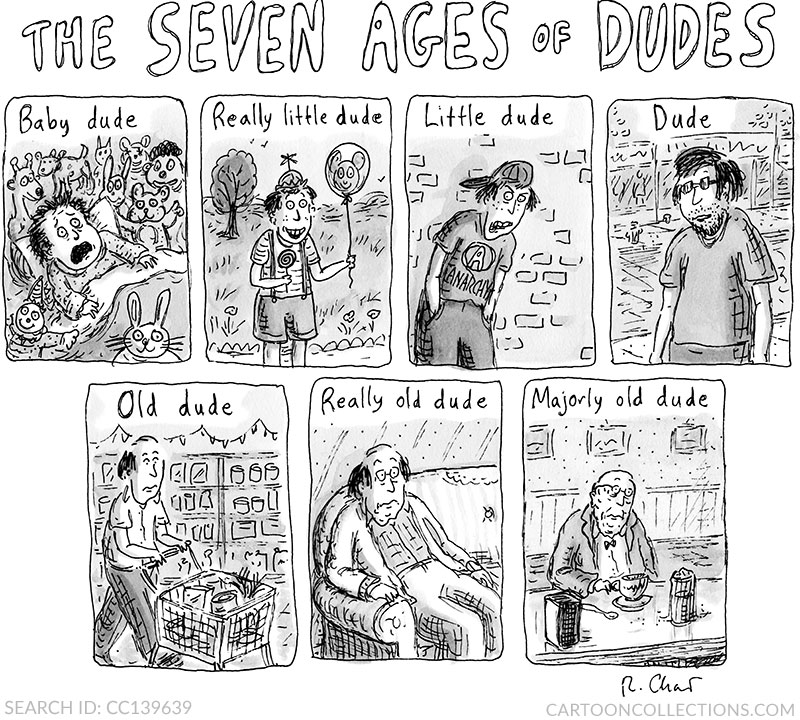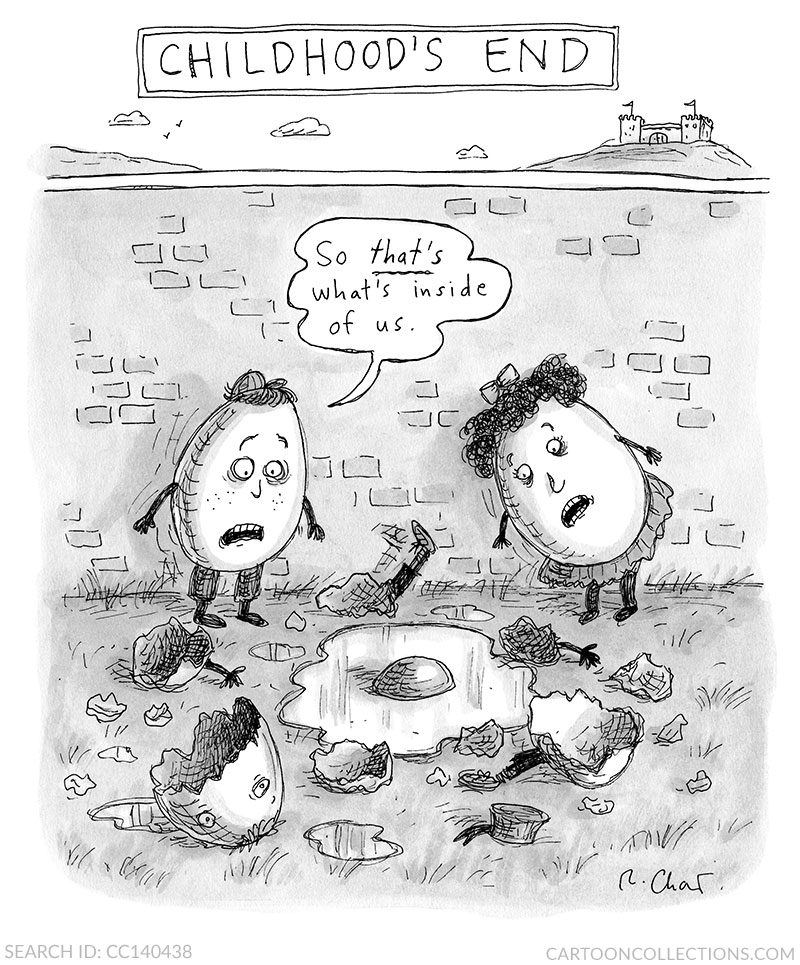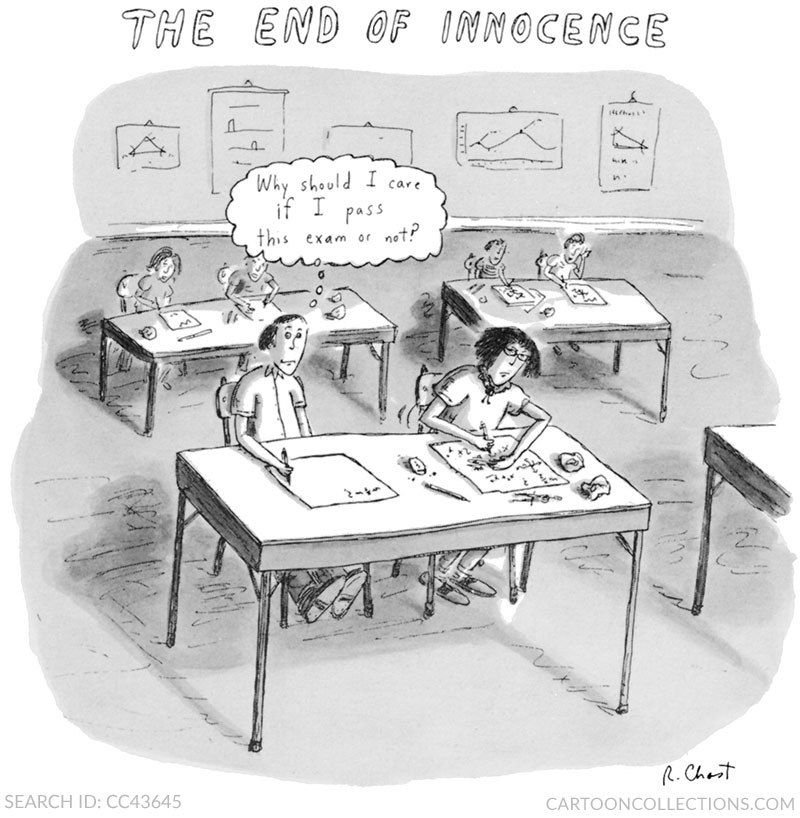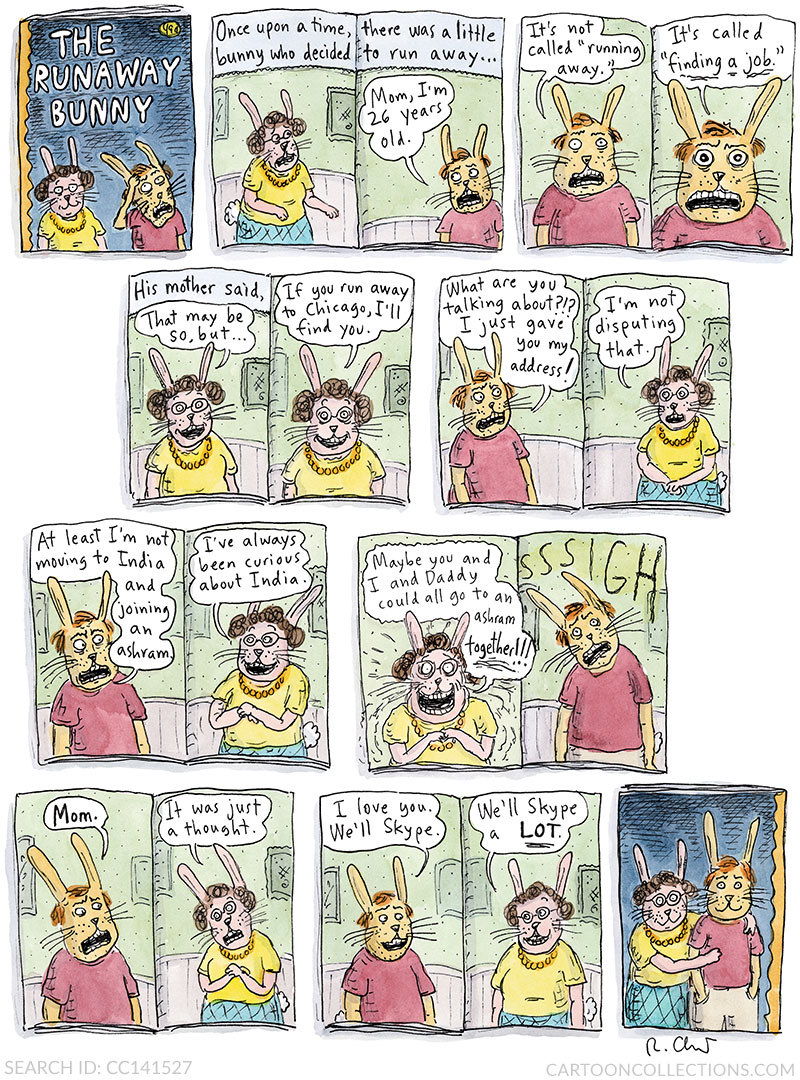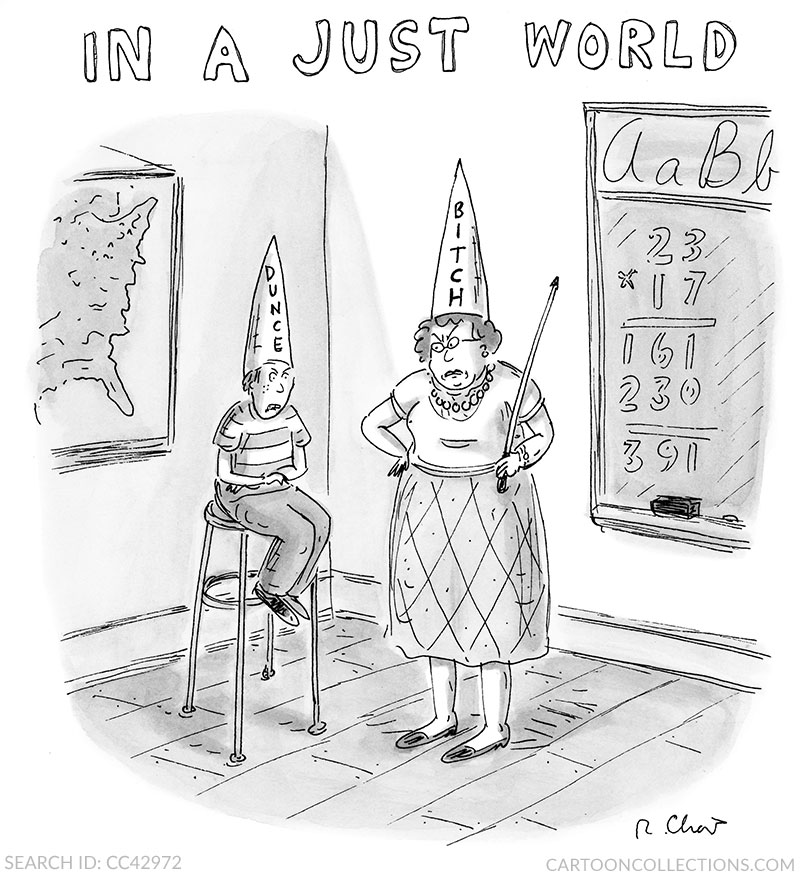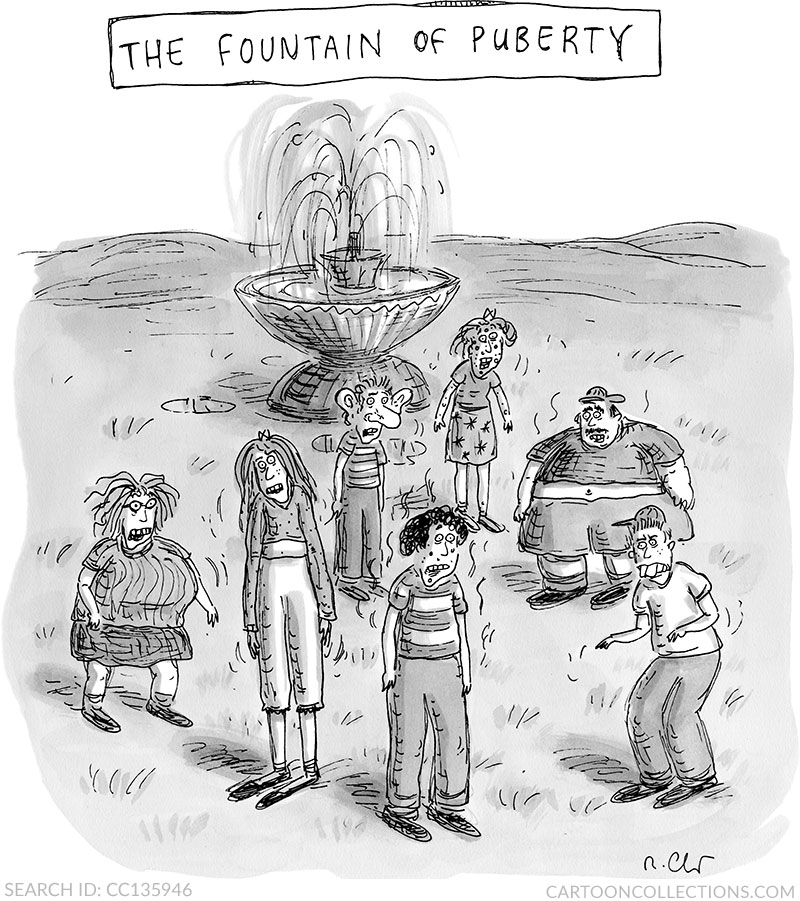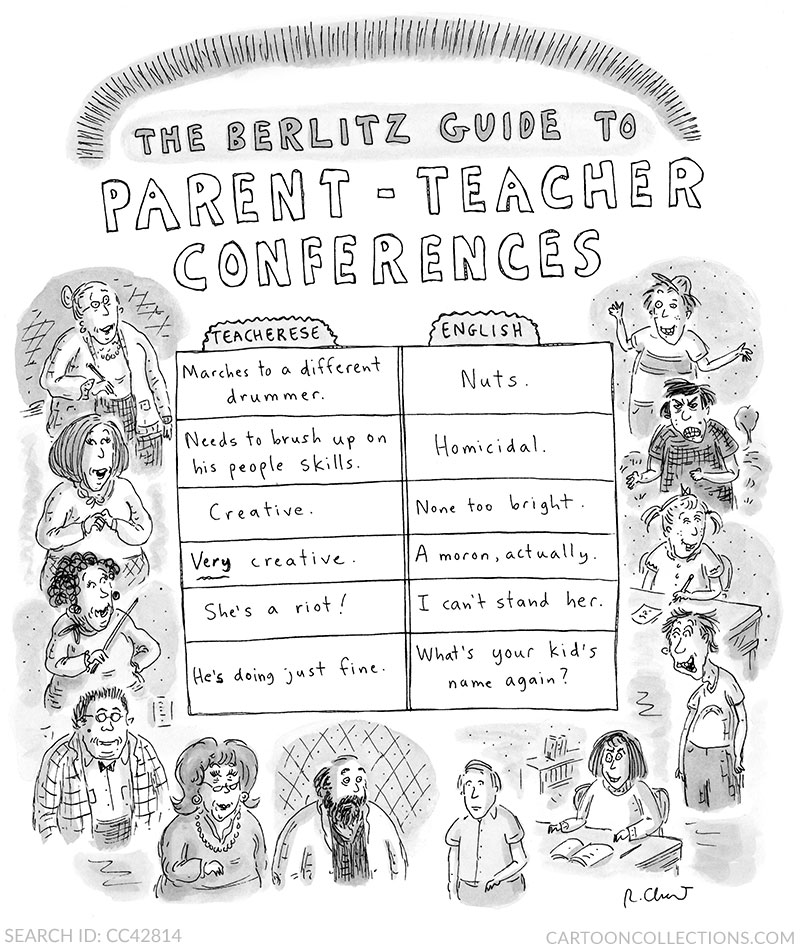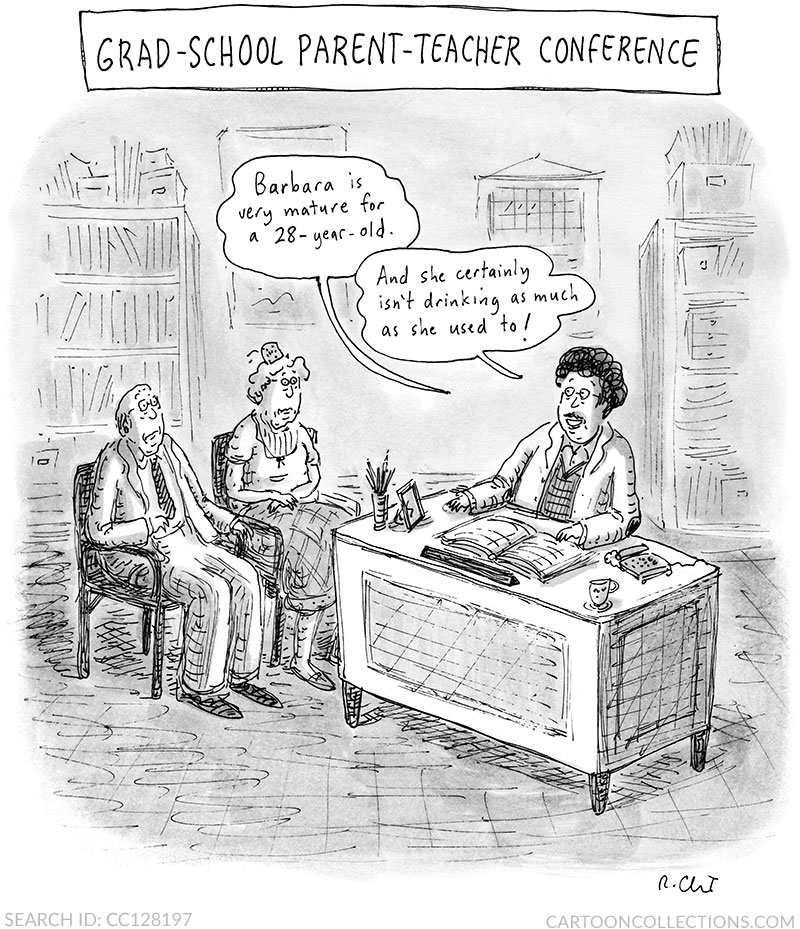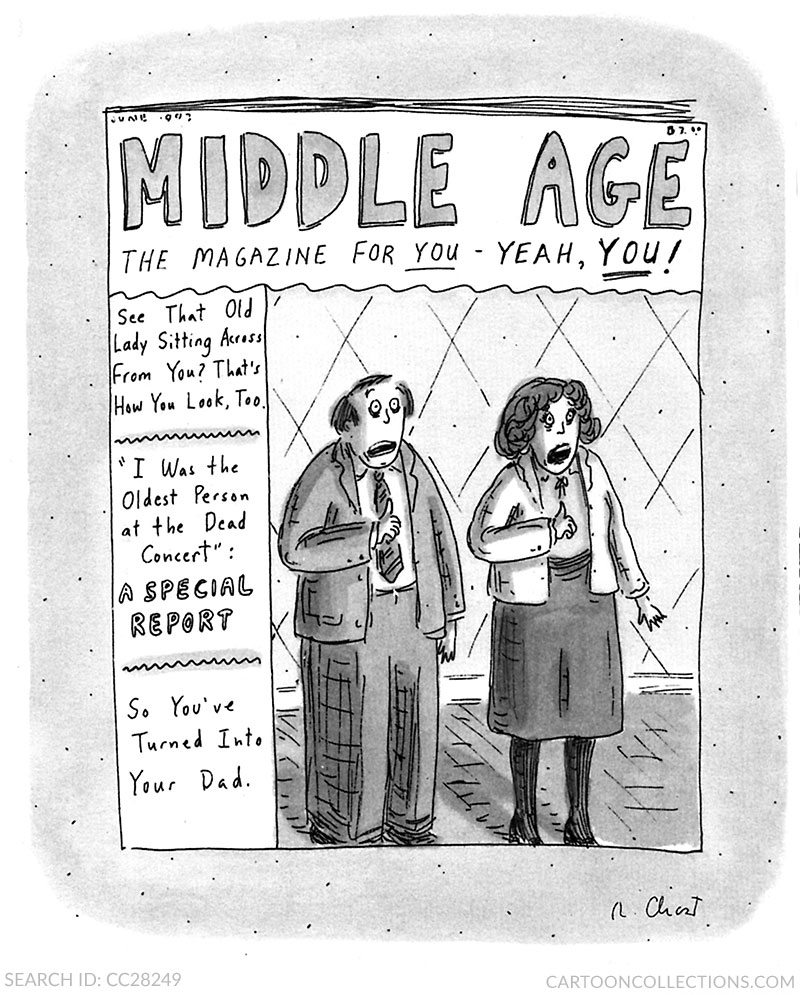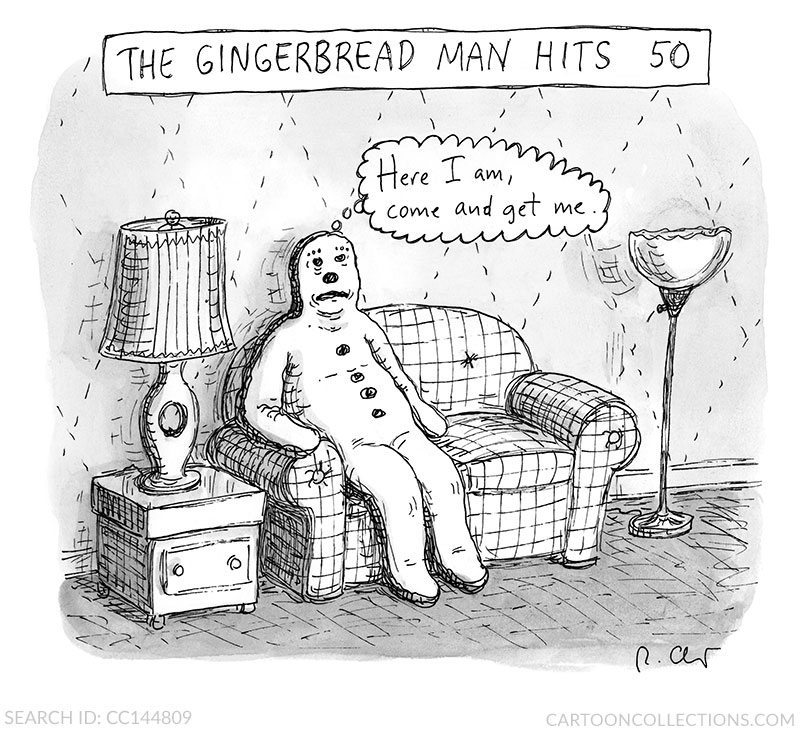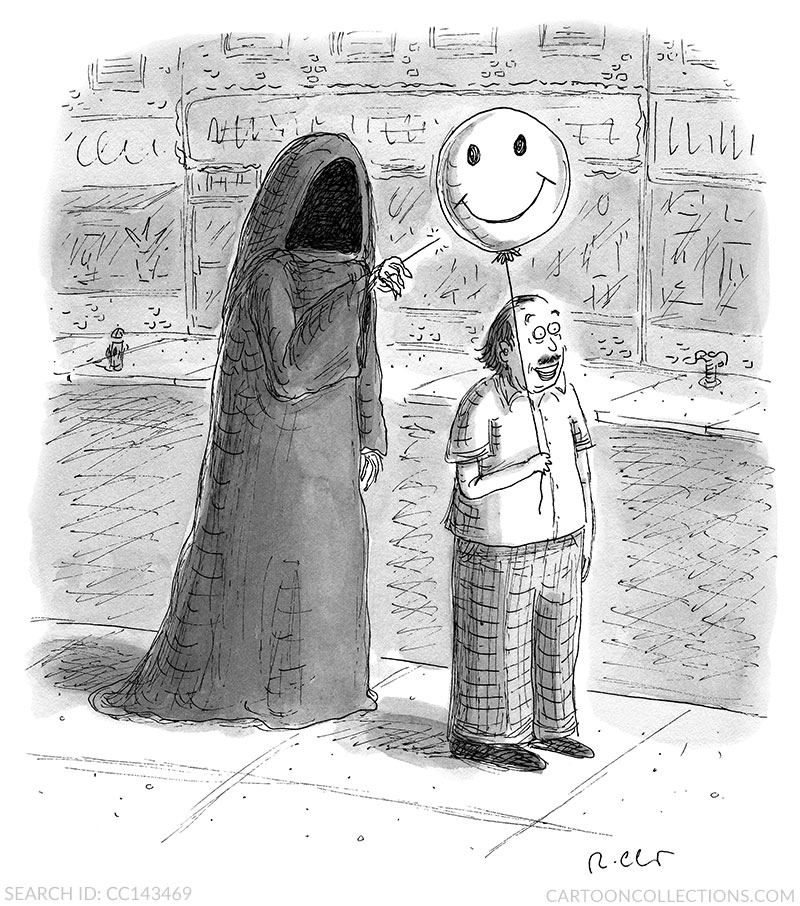 Cartoon critics Phil Witte and Rex Hesner look behind gags to debate what makes a cartoon tick. This week our intrepid critics focus on perennial favorite Roz Chast.
Cartoon critics Phil Witte and Rex Hesner look behind gags to debate what makes a cartoon tick. This week our intrepid critics focus on perennial favorite Roz Chast.
Roz Chast is a singular artist whose quirky, personal approach is instantly recognizable.
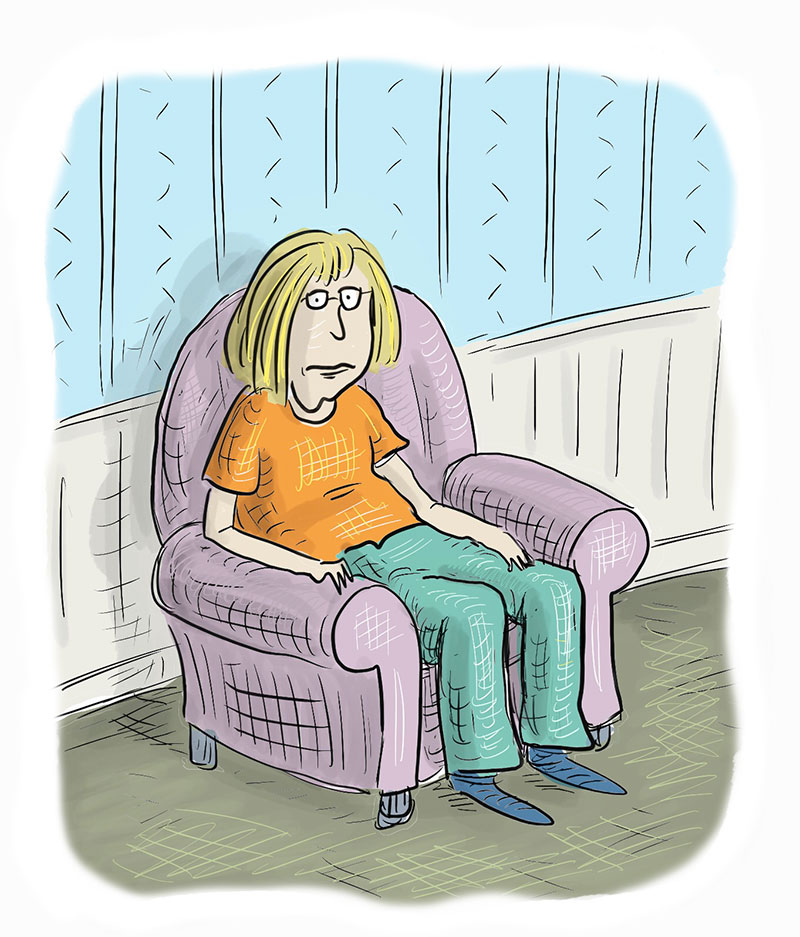
She’s transcended the single-panel genre to touch an international audience with poignant recollections of her aging parents in Can’t We Talk About Something More Pleasant?—a #1 New York Times bestseller. While her cartoons may now seem “typical” of the New Yorker, they were anything but when her work first appeared in the magazine over 40 years ago.
The theme we’re exploring through her cartoons is Life, through Roz’s unique point of view. Her cartoons are populated by urban-dwelling neurotics, often flummoxed by daily life, struggling valiantly to have normal relationships. With Roz’s generous assistance, we’ve selected cartoons that illustrate the awkward stages of contemporary life.
We begin with an overview of life, mirroring via a funhouse mirror Shakespeare’s Seven Ages of Man soliloquy. A Roz Chast cartoon often consists of multiple panels, as here, providing little narratives implied within each panel.
BUY THIS CARTOON
Life, according to this cartoon, begins in abject terror and ends in loneliness. And yet, we smile at this cartoon, in part because of the reimagining of a Shakespearean reference, but also because these dudes—Roz mocks the use of this overused slang term—are amusingly yet empathetically drawn.
While many youngsters can’t wait to grow up, Roz sees the end of childhood as a catastrophe, something that can never be reconstructed, as illustrated in the next cartoon.
BUY THIS CARTOON
Humpty Dumpty appears often in cartoons, but the focus here is on the two horrified children, also depicted as eggs, safely on the ground, at least for now. The egg yolk and scattered remnants of the fallen egg-youth are frightening. And it’s pretty weird, by Roz standards.
Next is a more realistic look at a similar subject, this time from the perspective of a schoolchild. Again, the title that accompanies the drawing signifies the end of a stage of development—innocence—while the thought bubble suggests the transition to another—apathy.
BUY THIS CARTOON
Here’s Roz’s commentary on that cartoon:
“This old one (I think from the mid-80s) is very personal–it actually happened to me in a calculus class in high school. My parents were in the ‘school system’ and the idea of not doing well in school was inconceivable to me … until I suddenly had this epiphany that this math test didn’t really matter. It didn’t matter AT ALL.”
Just so. And here’s another cartoon about growing up that Roz selected for this Anatomy of a Cartoon post:
BUY THIS CARTOON
This of course is a retelling of the classic children’s book of the same title. Roz told us she created this cartoon when her own kids were growing up. Like the book, the cartoon features a loving mother bunny—a bit more clingy than the one in the book—and a youngster—okay, he’s 26—feeling it’s time to explore the world on his own. And, like the book, this parody has a happy, non-cynical ending. Our favorite page is where the mom goes nutsy fantasizing about high-tailing to an ashram. Her crazed expression and her son’s full-page sigh are delightful.
Incidentally, Roz has told us that she loves drawing in color; her Instagram account
BUY THIS CARTOON
is filled with color drawings.
BUY THIS CARTOON
We’re still in school, but now a school found only in a just world, in Roz Chast’s view. The dunce cap may have disappeared generations ago, but teacher humiliation has not. Score one for the dunces.
BUY THIS CARTOON
Here’s another one that Roz selected for this post. First off, “Fountain of Puberty” is simply a great title, but the graphics really drive the humor. One can almost hear “Sprong!” as body parts enlarge spontaneously and independently. As awkward as these adolescents appear, they evoke our sympathy. The lesson is that life is full of surprises, often unpleasant.
Roz’s father taught languages in his school, so this next cartoon about translating “teacherese” to English probably came naturally to her. On the left are the gently critical instructors, and arrayed on the right are their crazed and stupid charges. Each pair of phrases is a gem. Merely “creative” might suggest an unconventional child, but “very creative” translates somewhat more negatively as “A moron, actually.” Bless those teachers and the clueless parents of foolish kids.
BUY THIS CARTOON
Why not mine a good cartoon concept? Here the professor paints as rosy a picture as he can to describe the grad student’s progress. This cartoon gives ’em the old one-two: a punchline followed by another funny remark. The parents are not reassured.
BUY THIS CARTOON
Surprise—you’re middle-aged! Your denials are futile.
BUY THIS CARTOON
Fictional magazine covers are one of Roz Chast’s favorite cartoon vehicles, and this one drives home the point that middle age is not a stage in life to look forward to. This couple stands with mouths agape and eyes wide open, wondering where their youth went.
BUY THIS CARTOON
Unlike the middle-aged couple, the aging Gingerbread Man has given up his life on the run. Milestone birthdays often bring about reflection; the expression on this doughy fellow suggests he’ll spend his remaining days sitting on a couch—the same couch in the same living room with the same dotted diamond wallpaper found so often in Roz Chast’s cartoons.
BUY THIS CARTOON
One of Roz’s darkest cartoons about aging is also one of the funniest, probably because it contains a kernel of truth. No one reads the obituaries when they’re young and healthy. Obituaries only become interesting when people around your age start to drop off. No caption is needed to guess what this aging gentleman is thinking.
BUY THIS CARTOON
We conclude with another caption-less cartoon, which Roz herself chose for this post. A person could be enjoying life one day, oblivious to the possibility that death is right around the corner, or in this case a mere step behind, ready to pop the life out of us. This cartoon answers the Biblical question, “O, death, where is thy sting?”, with “Uh, right behind you.” Roz has removed the sting somewhat with the ridiculous happy face balloon, but the truth revealed in this cartoon—indeed, in pretty much all of her cartoons—is what makes Roz Chast a great cartoonist on the human condition.


